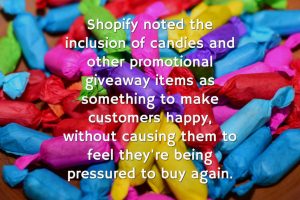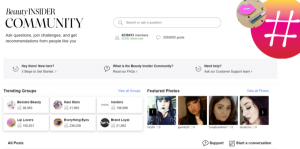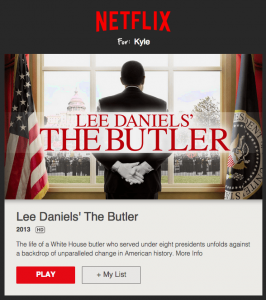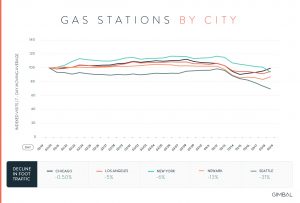Nothing works all the time on all sites. That’s why we test in the first place; to let the data tell us what is actually working.
That said, we have done quite a bit of user experience on eCommerce sites and have seen some trends in terms of what generates positive experiences from a customer perspective.
This post will outline 16 A/B test ideas based on that data.
Whether you’re just starting your first A/B tests or you’re just looking for continuous and never-ending improvements, these tactics are worth a look. At the very least, question your assumptions and give ‘em a test.
These ideas came from a massive round of UX research we’ve done for eCommerce. All of this is available in detail in our comprehensive eCommerce guidelines report (245+ guidelines specifically for eCommerce).
1. Prominent section for sales and specials
Various studies have repeatedly found that about half the online buyers would only buy discounted products, except under exceptional circumstances. Around 60% say they are looking for a section that identifies sales and specials.

Ultimately do what’s right for your brand, but it might be something worth experimenting with.
2. Emphasize wide-appeal products
The goal of the homepage is to get the people off the homepage. The best way to do it is to get them to click on an offer they’re interested in.
Look at your best-selling products or best deals and emphasize them on the homepage above all other (make them #1 in the visual hierarchy).
Here’s how WineLibrary makes it hard to miss these 3 great deals:

3. Make the search bar more prominent
If you sell products that people know to search for, making the search bigger and more prominent tends to work great. Think Amazon-style search bar – the center of it all.

4. Add a site-wide benefits bar below the header
“Why buy here and not from Amazon,” is a question that all eCommerce sites need to answer. A prominent benefits bar above the fold is one way to make your case.

5. Level-up your product description copy
Product descriptions matter. The role of product copy is to give buyers enough information, so they could convince themselves this is the right product for them. Clarity trumps persuasion.
Amazon has proper text for humans, turns features into benefits, and even provides a comparison table. Technical info is provided too.

If you sell products that you don’t make, don’t just repeat the manufacturer’s canned descriptions. Add your personal touch and recommendations – tell the customer why you personally recommend this product and how it will help them.
6. Use product videos and test auto-play with captions
Image are good, but video is better. Photos have their limitations; video is the next step before actual touching and feeling the products.
If you’re not doing product videos yet, do them for at least part of the inventory, and see if it makes a difference.
Zappos has videos for almost all of their product, such as this:

Read this post on how using video increases conversions. Our own split tests have suggested that auto-play videos work well for complex, high-ticket items.
7. Ask for email first on checkout
This is so you are able to send follow-up emails if they do not complete their orders. This is the screen people are taken to on Amazon when they’re ready to check out:

Make sure the first follow-up email goes out ASAP. If they complete the purchase somewhere else, it’s over. If the purchase take place, send one or two more follow-up emails (might include a coupon). Track the effectiveness of those emails (open, clickthrough and conversion rates).
Many ecommerce platforms such as Magento, 3DCart, and Volusion offer integrated cart abandonment solutions. There are also several add-on software providers out there that can do this. Here are 2 to start with: Rejoiner & SeeWhy.
8. Make the shopping cart persistent
People comparison shop. A common behavior is that they add products to cart on a site, and then they return later after some consideration or further advertising touch points to convert. If upon their return they discover that the contents of the shopping cart have expired, they probably won’t want to start from scratch (too much hassle).
The solution: persistent shopping cart. Done with persistent cookie, this shopping cart will be right there even a day or a week later.

9. Create visually prominent and clear progress indicators during checkout
People like to be in control and to be in the know. Are we there yet? We want to know how much longer something is going to take. This is why numbered lists are better than unordered lists and why you should have clear progress indicators on your site.
Crutchfield has it in the top right corner, but I think it’s quite small and may go unnoticed by many:

Crate&Barrel’s approach is better, with more more prominent steps (1,2, and 3):

10. Clearly address purchase uncertainties
Is this safe? Can I do returns? When will my purchase arrive?
If the visitor has never ordered from you before, they will have several uncertainties you have to deal with. Make a list of the most common objections and doubts, and address them on product pages and in the shopping cart.
Here’s how Groupon deals with this (look at the sidebar):

11. Expand your payment options
Options are good. 2 reasons:
- Given the scandals about credit card information theft, some people are wary of using credit cards for online payments (especially on a site they’ve never used before).
- A 2009 survey of 2000 online British adults found that 50% of those who regularly shop online said that if their preferred payment method is not available, they will cancel the purchase.
These people are not the majority, but adding payment options like PayPal or Amazon Payments to credit card payments will help you win over some customers you would lose otherwise.
Check out how Moosejaw.com does it:

12. Cut form length
Eventually, people will add products to the cart and they’re ready to check out. Your success in leading them through this depends a lot on the forms. The more fields they have to fill in, the more friction there is.
This is the very reason people prefer to buy from Amazon. Their shipping and credit card information is already there, so they will save themselves from the hassle of filling in forms. They’re even ready to pay a higher price just to save a couple of minutes (I know I am).
I’ve seen stores ask for shipping address for digital downloads. Ugh! Just stick with the essentials.
You don’t need the customer’s title or middle name!
Bottom line: do not ask for information you don’t absolutely need.
13. Don’t force people to register, add it in the backend
Surely you know the $ 300 million dollar button story. Don’t force people to register.
Instead, offer the option to register if they want, but create an account anyway for those who opt for guest checkout. They will enter their email and name anyway. You just have to generate a password and email it to them once they complete their order.
Home Depot plays nice and offers guest checkout as the first option:

14. Display reviews more prominently
People use reviews. Even while they’re shopping in brick and mortar stores, they read online reviews. You probably do it, too; it’s about perceptions of security and quality: do other people like this, too?
Nearly 60 percent of online shoppers consult reviews prior to purchasing consumer electronics and 40 percent of online shoppers claimed that they would not even buy electronics without seeking reviews about the product online first.
Bottom line: Start gathering and showcasing reviews on your site.
If you sell commodity products and can’t get users to write many reviews, you might want to look into pulling reviews from an external site to have more of them.

Oh, and don’t delete negative reviews – they actually help sales if there are only a few of them.
15. Upsell, intelligently
Upselling and cross-selling will boost your average order size. Apple knows this and immediately after adding an iPad to your cart, it tries to upsell you:

The rule of upselling is this: you only offer related products (Apple offers smart cover for iPad, and doesn’t try to sell you an iPod), and the offer must be at least 60% cheaper than the product they just added to their shopping cart.
So if they’re buying pants, upsell a belt.
Brick and mortar supermarkets will try to upsell you while you’re checking out (grab a candy bar while you wait). Online, don’t do it. Focus on getting them to check out.
16. Clear, big calls to action
The user experience in your store needs to be smooth. Smooth in the sense that they should never have to look for something. It should always be obvious how things work.
If people need to look for “add to cart” or “checkout” buttons, you’re failing miserably. Those two are the most important buttons in your store. You want them big, bold and prominent. Avoid text links.
The wording and color of the button also matter, but you need to test it. Bigger buttons are better.
Check out how Patagonia has evolved their product page. Here’s a product page from 2012:

And from today:

Notice the newer design and the red color that sticks out is the add to cart button and the cart itself.
Conclusion: Test It
Usability is your best friend. I strongly recommend you conduct user testing on your eCommerce site to find problems with your interface you might not be aware of. Give people some tasks (e.g. find X, and buy it), and have them comment out loud while they’re browsing your site. You either watch over their shoulder or watch the screen recording of it.
TryMyUI is what we used for our user testing. Try them out. 15 people will discover 99% of the problems. Even testing one target user is better than testing none at all.
Want to get some quantitative data? Try standardized surveys via UX benchmarking. We have our own methodology that was used in this report. You can try that, or use your own approach. One benefit of UX benchmarking is that it is increasingly useful as you repeat, either as a comparison after a design change, or against competitors to see where you are falling behind.
Finally, take the ideas in this report and test them. Take our advice. Then do your own testing.
Digital & Social Articles on Business 2 Community(93)





